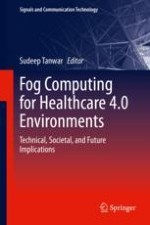2021 | OriginalPaper | Buchkapitel
9. Fog-IoT Environment in Smart Healthcare: A Case Study for Student Stress Monitoring
verfasst von : Tawseef Ayoub Shaikh, Rashid Ali
Erschienen in: Fog Computing for Healthcare 4.0 Environments
Aktivieren Sie unsere intelligente Suche, um passende Fachinhalte oder Patente zu finden.
Wählen Sie Textabschnitte aus um mit Künstlicher Intelligenz passenden Patente zu finden. powered by
Markieren Sie Textabschnitte, um KI-gestützt weitere passende Inhalte zu finden. powered by
